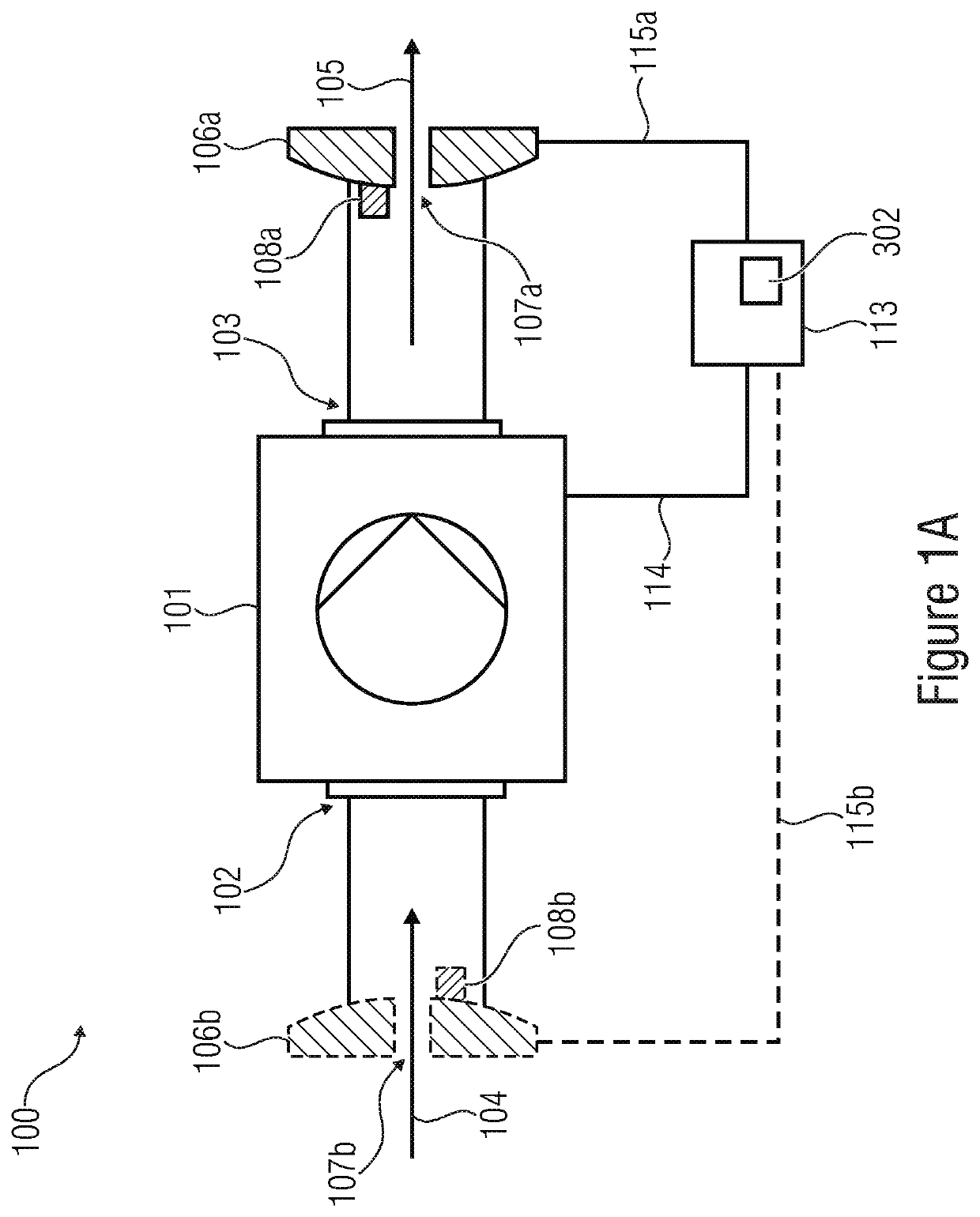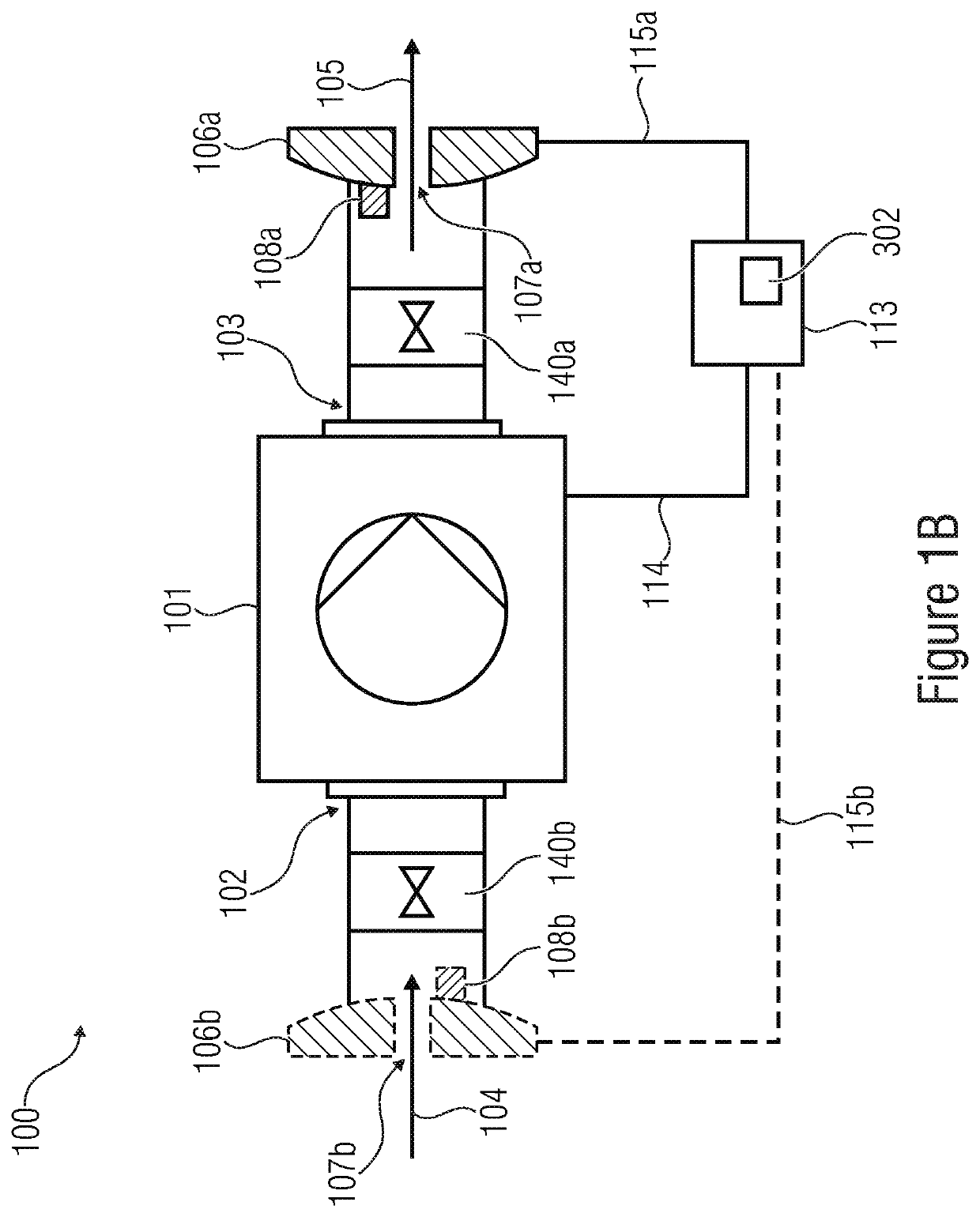Microdosing system
a microdosing system and microdosing technology, applied in the direction of liquid/fluent solid measurement, volume/mass flow by differential pressure, stationary measuring chambers, etc., can solve the problems of flow sensors, undesired drift behavior, and large and expensive known microdosing systems, so as to prevent free flow, prevent undesired backflow of fluid, and prevent undesired backflow
- Summary
- Abstract
- Description
- Claims
- Application Information
AI Technical Summary
Benefits of technology
Problems solved by technology
Method used
Image
Examples
Embodiment Construction
[0046]FIG. 1A shows an inventive microdosing system 100 for dosing an amount of fluid to be dispensed. The fluid to be dispensed can, for example, by a gas or a liquid. The fluid can have different rheologic characteristics. For example, the fluid can have a low viscosity. The fluid having a low viscosity can, for example, be a cream or a lotion. The fluid can comprise medically active ingredients. The fluid can, for example, also be a deodorant solution containing scents.
[0047]The micodosing system 100 comprises a micropump 101. The micropump 101 comprises an inlet 102 and an outlet 103.
[0048]The micropump 101 is configured to suck the fluid to be dispensed, indicated by the arrow 104, through the inlet 102. Further, the micropump 101 is configured to dispense at least part of the fluid indicated by the arrow 105 from the outlet 103.
[0049]The microdosing system 100 comprises a first flow sensor 106a, 106b. The first flow sensor 106a is arranged on the outlet side, i.e., the same is...
PUM
 Login to View More
Login to View More Abstract
Description
Claims
Application Information
 Login to View More
Login to View More - R&D
- Intellectual Property
- Life Sciences
- Materials
- Tech Scout
- Unparalleled Data Quality
- Higher Quality Content
- 60% Fewer Hallucinations
Browse by: Latest US Patents, China's latest patents, Technical Efficacy Thesaurus, Application Domain, Technology Topic, Popular Technical Reports.
© 2025 PatSnap. All rights reserved.Legal|Privacy policy|Modern Slavery Act Transparency Statement|Sitemap|About US| Contact US: help@patsnap.com



